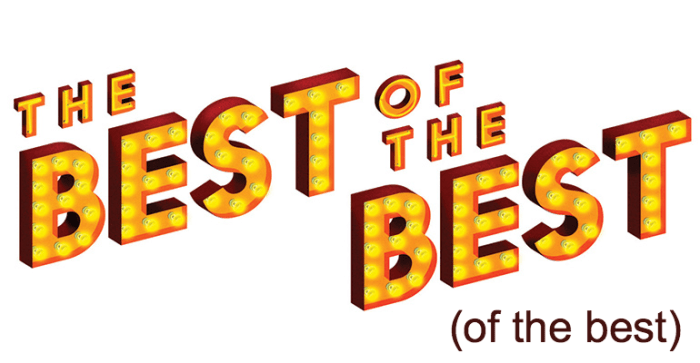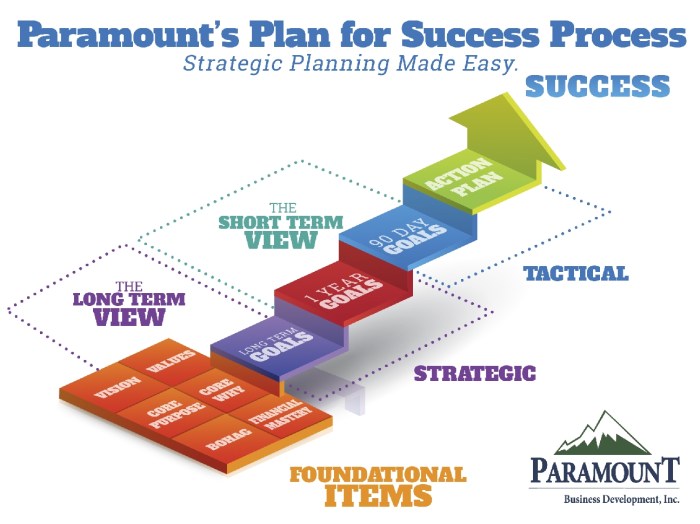Best time to visit Boulder? That depends on what you’re looking for! Whether you crave vibrant summer festivals, crisp autumn foliage, or the peace of spring wildflowers, this guide unveils the ideal season for your perfect Boulder adventure. From bustling crowds to budget-friendly options, we’ll explore the nuances of each season to help you plan the unforgettable trip you desire.
Boulder’s beauty unfolds throughout the year, each season showcasing unique charms. This exploration delves into the weather patterns, popular activities, and crowds, providing insights into the best time to visit for various interests and budgets.
Introduction to Boulder’s Seasons

Boulder, Colorado, offers a unique blend of stunning natural beauty and vibrant city life, all wrapped up in four distinct seasons. Understanding these seasons is crucial for planning your visit, ensuring you experience the best that Boulder has to offer, regardless of the time of year. From the crisp mountain air of winter to the sunny days of summer, each season presents a different charm and activity.Boulder’s location in the foothills of the Rocky Mountains influences its weather patterns, creating a diverse range of experiences throughout the year.
The high altitude plays a significant role in the temperatures, and the proximity to the mountains dictates the amount of snowfall in the winter.
Boulder’s Spring Season
Spring in Boulder is a time of rebirth and renewal, marked by the thawing of winter’s grip and the emergence of wildflowers. Temperatures gradually rise, providing pleasant days for outdoor activities. The transition from winter’s chill to spring’s warmth often brings a mix of sunny days and occasional showers.
Boulder’s Summer Season
Boulder’s summer months are known for their sunny days and warm temperatures. The days are long, providing ample opportunities for outdoor adventures, from hiking in the mountains to enjoying the city’s parks. Expect high temperatures, often exceeding 80°F (27°C) during the day, with occasional thunderstorms.
Boulder’s Autumn Season
Autumn in Boulder brings stunning colors to the mountainsides as the leaves change. The days become shorter, and the air cools down, creating a crispness that is perfect for fall foliage viewing. The weather is generally mild, with pleasant temperatures and a possibility of some rain or even a dusting of snow later in the season.
Boulder’s Winter Season
Winter in Boulder is characterized by cold temperatures and snowfall. The mountains often see significant accumulation of snow, creating ideal conditions for skiing and snowboarding. Temperatures can drop well below freezing, and precipitation, often in the form of snow, is a common occurrence.
Seasonal Weather Summary
| Season | Temperature | Precipitation | Daylight Hours |
|---|---|---|---|
| Spring | 40°F to 70°F (4°C to 21°C) | Variable, ranging from occasional showers to dry spells | Around 12-14 hours |
| Summer | 60°F to 85°F (16°C to 29°C) | Occasional thunderstorms, generally dry | Around 14-16 hours |
| Autumn | 40°F to 60°F (4°C to 16°C) | Possibility of rain or snow, especially later in the season | Around 9-11 hours |
| Winter | 20°F to 40°F (-7°C to 4°C) | Significant snowfall | Around 8-10 hours |
Activities and Events
Boulder, Colorado, boasts a vibrant calendar of activities and events, catering to a diverse range of interests throughout the year. From outdoor adventures to cultural experiences, there’s always something exciting happening in this mountain town. Understanding the best times to visit for specific activities is key to making the most of your trip.This section delves into the diverse activities and events that Boulder offers, categorized by season, providing insight into when to plan your visit for optimal enjoyment.
Knowing the best time for specific pursuits, such as hiking, biking, or attending outdoor concerts, will enhance your Boulder experience.
Boulder’s stunning scenery is best enjoyed during the shoulder seasons, spring and fall. Thinking about a hiking trip in Scotland’s beautiful East Coast? Planning a hiking trip to Scotland’s East Coast requires careful consideration of the weather, but thankfully, Boulder’s pleasant temperatures during these seasons make it ideal for outdoor adventures too. So, whether you’re trekking in the Scottish Highlands or exploring Boulder’s trails, the best time to visit is when the weather is consistently pleasant.
Spring Activities and Events
Spring in Boulder brings a surge of life to the landscape, and this is reflected in the activities and events taking place. The weather warms, flowers bloom, and the mountains begin to thaw, opening up a plethora of opportunities for outdoor enthusiasts.
- Hiking and Biking: Spring offers excellent conditions for hiking and biking. Trails are less muddy than in winter, and the weather is pleasant enough for extended outdoor adventures. The wildflowers are in full bloom, creating a spectacular backdrop for your explorations.
- Outdoor Concerts and Festivals: Spring often marks the start of outdoor concert seasons in Boulder. Many festivals and events take place during this time, offering a chance to enjoy live music and entertainment in the fresh air.
- Farmers Markets: Local farmers markets pop up, offering fresh produce, artisan crafts, and a glimpse into the local community. This is a great way to experience the local culture and support local businesses.
Summer Activities and Events
Summer is Boulder’s peak season, known for its warm weather and long days. This is the ideal time for outdoor activities and events.
- Outdoor Recreation: Hiking, biking, rock climbing, and kayaking are at their peak in the summer. Boulder’s stunning natural beauty is best enjoyed during this time, with warm temperatures and ample daylight hours.
- Music Festivals: Many music festivals and outdoor concerts take place during the summer months, offering a diverse range of musical styles. This is a great opportunity to experience the local music scene.
- Sporting Events: Summer also brings sporting events, particularly outdoor sporting events. These events often draw large crowds and offer a chance to experience the vibrant energy of the city.
Autumn Activities and Events, Best time to visit boulder
Autumn in Boulder is a time of transition, with vibrant colors and crisp air.
- Hiking and Leaf Peeping: The changing foliage in the mountains offers breathtaking scenery for hiking and leaf-peeping excursions. The trails are usually less crowded than during the summer months.
- Craft Fairs and Festivals: Boulder hosts numerous craft fairs and festivals during the fall season, offering unique handmade goods and artisan creations. These events often feature live music and food vendors.
- Outdoor Sporting Events: Outdoor sporting events, such as marathons and trail races, continue to be held, offering opportunities to participate or spectate.
Winter Activities and Events
Winter in Boulder presents a unique set of activities and events, centered around the colder weather.
- Skiing and Snowboarding: The nearby mountains offer excellent skiing and snowboarding opportunities. Winter is the ideal time to experience these activities.
- Ice Skating and Snowshoeing: Ice skating rinks and snowshoeing trails are popular options for winter recreation. These activities provide a chance to enjoy the winter landscape.
- Holiday Events: Boulder hosts various holiday events, including concerts, light displays, and gatherings. These celebrations provide a festive atmosphere.
| Season | Activities | Events | Ideal Time |
|---|---|---|---|
| Spring | Hiking, biking, outdoor concerts, farmers markets | Outdoor concerts, festivals | March-May |
| Summer | Hiking, biking, rock climbing, kayaking, outdoor concerts | Music festivals, sporting events | June-August |
| Autumn | Hiking, leaf peeping, craft fairs | Craft fairs, festivals, outdoor races | September-November |
| Winter | Skiing, snowboarding, ice skating, snowshoeing | Holiday events, concerts | December-February |
Crowds and Booking

Boulder, Colorado, draws visitors year-round, but the volume and nature of crowds fluctuate dramatically across the seasons. Understanding these patterns is key to maximizing your trip experience and ensuring you get the best possible deals. This section explores the seasonal visitor trends, how they impact accommodation and activities, and when’s the best time to book.
Visitor Crowds by Season
Boulder’s crowds are most pronounced during the summer months. The warm weather and numerous outdoor activities attract a large number of tourists. Spring also experiences a significant influx of visitors, particularly during spring break and warmer weekends. Autumn, with its vibrant foliage and pleasant weather, sees a moderate influx of tourists. Winter, while quieter than other seasons, still attracts a dedicated group of visitors drawn to winter sports and the festive atmosphere.
Impact of Visitor Numbers on Accommodation and Pricing
High visitor numbers in peak seasons, like summer, directly correlate with limited accommodation availability and higher prices. This is a standard economic principle where demand outpaces supply. Conversely, the quieter winter months offer more flexibility and potentially lower rates. Booking well in advance, especially during peak seasons, is crucial to securing your preferred accommodation and desired activities.
Best Time to Book Accommodations and Activities
To ensure you secure your preferred accommodation and activities, especially during peak seasons, booking in advance is highly recommended. For summer, it’s often advisable to book at least 2-3 months in advance. Spring and autumn bookings are generally less critical, but booking a week or two before your trip can still be beneficial to secure the best rates and availability.
For winter, booking 1-2 months in advance can often be sufficient, though this is also dependent on the specific event or activity you wish to participate in.
Springtime in Boulder is fantastic, with pleasant temperatures and fewer crowds. But if you’re looking for a different kind of vibrant atmosphere, exploring the best neighborhoods in Valencia, like the ones featured in this guide best neighborhoods in valencia , could be a great idea too! Ultimately, the best time to visit Boulder is whenever you can enjoy the beautiful scenery and activities.
Average Accommodation Prices by Season
| Season | Crowds | Accommodation Availability | Booking Recommendations |
|---|---|---|---|
| Spring | Moderate; higher on weekends and holidays | Generally good, but can fill up quickly during peak periods | Book 1-2 weeks in advance for better rates and availability. |
| Summer | High; significant tourist influx | Limited availability, especially during peak weekends and holidays | Book 2-3 months in advance to secure your preferred accommodation. |
| Autumn | Moderate; fewer crowds than summer but still a notable influx | Good availability, but can fill up quickly during weekends and holidays | Book 1-2 weeks in advance for better rates and availability. |
| Winter | Low; typically the quietest season | High availability; often the best time to find good deals | Book 1-2 months in advance, depending on specific events. |
Visual Representation of Boulder: Best Time To Visit Boulder
Boulder, Colorado, boasts a captivating beauty that shifts and evolves throughout the year, mirroring the vibrant tapestry of its seasons. From the vibrant greens of spring to the fiery hues of fall, the landscape offers a unique and stunning spectacle. Understanding how the light and colors change provides a deeper appreciation for the city’s visual appeal, guiding visitors to the best times to experience specific locations.The visual artistry of Boulder is a testament to its natural beauty, from the towering peaks of the Flatirons to the shimmering waters of the Boulder Creek.
Boulder’s spring and fall seasons are generally the best times to visit, offering pleasant temperatures and fewer crowds. Thinking about Egyptian history? A fantastic resource for planning your trip to the Grand Egyptian Museum is this guide. But honestly, any time is a good time to explore the beauty of Boulder’s natural landscape, especially with the right gear and preparation!
These elements combine to create a unique experience, and a keen eye for seasonal shifts will enhance your journey through this remarkable destination.
Spring in Boulder
Spring in Boulder brings a burst of life to the landscape. The days lengthen, the air warms, and the mountains awaken from their winter slumber. Emerald greens emerge, painting the foothills and valleys in vibrant hues. Sunlight filters through the trees, casting a soft, warm glow over the city. Boulder Creek awakens, flowing with renewed vigor.
The overall mood is one of renewal and anticipation. Cherry blossoms might grace the city’s parks, adding a touch of delicate pink to the vibrant greenery. The foothills, previously muted, are transformed into a lush expanse, teeming with wildflowers and new life. Hiking trails become accessible, and the city’s outdoor spaces are filled with activity.
Summer in Boulder
Summer in Boulder brings a high-energy atmosphere, marked by bright sunlight and warm temperatures. The mountains stand in sharp relief against the brilliant blue sky, their peaks catching the light and casting long shadows. The color palette transitions to deep greens and golds, as the vegetation reaches its peak. The sun’s intensity warms the city and the surrounding areas, inviting outdoor activities.
Boulder Creek flows at a steady pace, providing a refreshing respite from the heat. Hiking and biking trails are popular destinations, offering breathtaking views of the mountains. The vibrant colors of wildflowers and the deep green of the pines create a captivating visual feast. The overall mood is one of activity, exhilaration, and freedom.
Fall in Boulder
Fall in Boulder is a symphony of color. The leaves on the trees transform into a vibrant tapestry of reds, oranges, and yellows, creating a stunning display against the backdrop of the Flatirons. The air becomes crisp and cool, and the light takes on a warm, golden hue. Boulder Creek slows its pace, reflecting the changing colors around it.
The mountains stand out in a clear, sharp contrast against the sky, as the vibrant colors of the trees create a striking contrast. The overall mood is one of celebration, warmth, and anticipation of the coming winter. Crisp air and the beauty of the surrounding nature provide a unique autumnal experience.
Winter in Boulder
Winter in Boulder brings a unique charm, characterized by crisp air, snow-covered landscapes, and a sense of tranquility. The sun’s rays are softer, casting a warm glow over the city and the surrounding mountains. The snow-covered peaks of the Flatirons are striking against the azure sky. The overall mood is one of stillness and peace. The snow-dusted landscapes create a winter wonderland.
Boulder Creek often transforms into a frozen spectacle, creating a unique winter ambiance. The city’s outdoor spaces offer a different kind of beauty, perfect for winter activities such as snowshoeing and cross-country skiing. The mountains and the city are bathed in a soft, ethereal light.
Specific Locations and Seasonal Changes
| Location | Spring | Summer | Fall | Winter |
|---|---|---|---|---|
| Chautauqua Park | Vibrant green grass, blossoming flowers, soft light. | Full foliage, shaded areas, perfect for picnics and relaxation. | Golden and red leaves, crisp air, great for walking trails. | Snowy wonderland, quiet and peaceful, ideal for winter sports. |
| Flatirons | Green foothills, fresh air, stunning views. | Bright sunny days, vibrant colors, hiking and biking trails. | Colorful foliage, breathtaking views, crisp air. | Snowy peaks, serene and quiet, amazing views from hiking trails. |
| Boulder Creek | Flowing water, vibrant surroundings, refreshing. | Steady flow, warm weather, perfect for swimming and relaxing. | Clear water, vibrant surroundings, reflecting the colors. | Frozen spectacle, quiet and serene, ideal for ice skating. |
Interactive Image Gallery
Creating an interactive image gallery requires software and web design skills. The gallery would showcase Boulder’s seasonal beauty through high-quality images, accompanied by detailed captions describing the specific location, time of year, and mood of the scene. A clickable image gallery would enable users to zoom in, view details, and explore the full visual spectrum of Boulder’s diverse scenery.
Considerations for Different Visitors
Boulder, Colorado, offers a unique experience year-round, but the best time to visit depends heavily on your priorities and travel style. Whether you’re seeking family fun, romantic escapes, or budget-friendly adventures, this guide will help you plan the perfect trip.
Families with Children
Families with children often look for activities that cater to a range of ages and interests. Boulder’s vibrant community spirit shines through in its parks, playgrounds, and museums. Summer offers the most opportunities for outdoor adventures, with parks teeming with children playing, picnics, and outdoor concerts. However, the summer crowds can be significant. Spring and fall provide a good balance, with pleasant temperatures and fewer crowds, allowing for more focused family time.
Couples Seeking Romance
For couples seeking a romantic getaway, Boulder’s stunning scenery and relaxed atmosphere offer the ideal backdrop. The crisp autumn air, vibrant fall foliage, and cozy cafes provide a romantic ambiance. Spring, with its blooming flowers and milder weather, also presents a beautiful alternative. While summer offers outdoor activities, it’s often the busiest time of year, potentially detracting from a serene couple’s getaway.
Budget-Conscious Travelers
Budget-conscious travelers will find Boulder’s attractions and activities appealing, though pricing can vary. The shoulder seasons of spring and fall offer the best balance of pleasant weather and lower prices. Accommodation costs and dining expenses tend to be lower during these periods. Summer, with its higher demand, typically sees a rise in costs, making it a more expensive time to visit.
However, taking advantage of discounts and deals can still help save money during peak seasons.
Comparison Table for Different Visitor Types
| Visitor Type | Ideal Season | Considerations |
|---|---|---|
| Families | Spring or Fall | Pleasant weather, fewer crowds than summer, many outdoor activities for various ages. |
| Couples | Spring or Fall | Romantic ambiance, pleasant temperatures, fewer crowds than summer, opportunities for intimate outings. |
| Budget Travelers | Spring or Fall | Lower accommodation and dining costs, fewer crowds, pleasant weather for exploring attractions. |
Wrap-Up
Ultimately, the best time to visit Boulder is the time that aligns with your personal preferences and priorities. Whether you’re seeking adventure, relaxation, or a blend of both, this guide has equipped you with the knowledge to choose the season that best suits your needs. From the vibrant energy of summer festivals to the tranquility of a spring hike, Boulder offers something for every traveler.
Plan your perfect trip now!




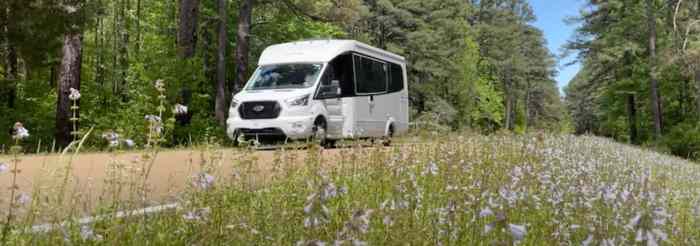
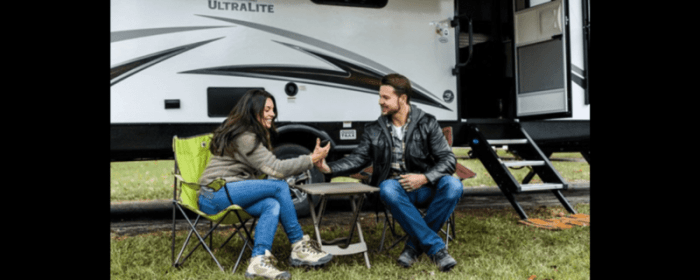
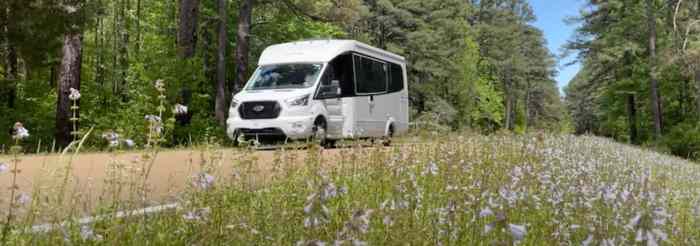



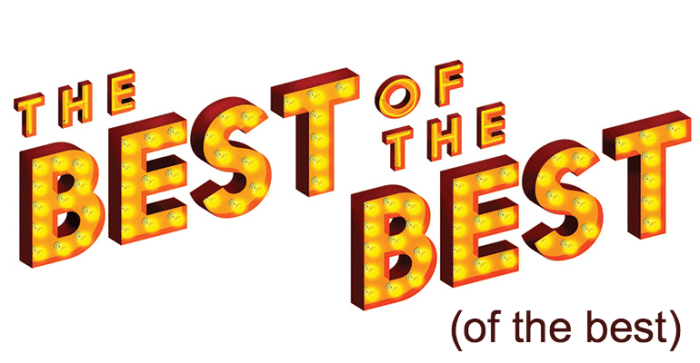

 This flowchart helps guide you through the process of selecting the ideal beach. Start by considering your budget, desired atmosphere, and family needs. Next, identify activities you want to pursue and look for beaches that offer those opportunities. Finally, research the specific beach, considering factors like amenities, regulations, and expected crowds. Choosing the perfect beach is an important step in planning a memorable beach day.
This flowchart helps guide you through the process of selecting the ideal beach. Start by considering your budget, desired atmosphere, and family needs. Next, identify activities you want to pursue and look for beaches that offer those opportunities. Finally, research the specific beach, considering factors like amenities, regulations, and expected crowds. Choosing the perfect beach is an important step in planning a memorable beach day.